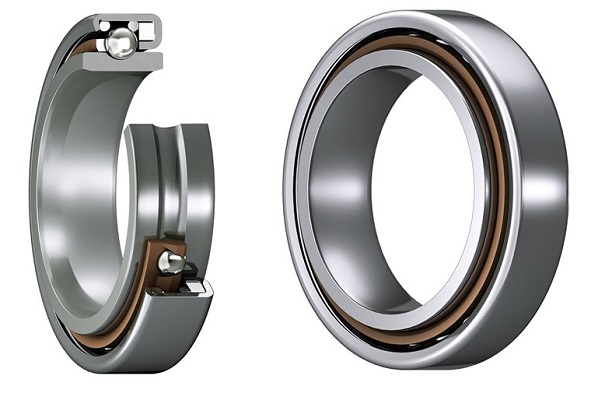Factors affecting the service life of rolling bearings
Whether in terms of installation or use and maintenance, there are many external factors that will affect the service life of rolling bearings, such as improper installation, improper maintenance and so on.
Analysis of installation factors
For example, the installation of bearing seat gland and bearing seat seal of conveying roller table are important factors affecting bearing performance. The installation of bearing seat gland directly affects the radial clearance of bearing. Too small bearing clearance will lead to bearing overheating, aggravate bearing wear, and the wear resistance of bearing can not be brought into play. It may also directly cause the bearing to jam. Therefore, use highland barley paper correctly to adjust the gland position before gland installation.
The installation quality of bearing seat seal (framework oil seal) affects the corrosion rate of bearing. The roller bearing seat works in a watery environment. During installation, the damage of the seal and the incorrect installation method will lead to the water inflow of the bearing to iron oxide impurities and speed up the corrosion of the bearing elements. The framework oil seal shall be installed to avoid mechanical damage, and the lip shall face the outside of the bearing seat.
Bearing maintenance factors
For example, the maintenance of the conveying roller table is divided into daily maintenance, operation inspection and fault handling.
The daily maintenance of the bearing is mainly lubrication. Under the condition of fully ensuring lubrication, even in the most complex working environment, the service life of the bearing can reach 5 to 10 years (about 200 million ~ 300 million revolutions). However, under the condition of poor lubrication, the service life of the bearing will be reduced to about 3 months (about 9 million revolutions). The following is the service life of the bearing under various grease feeding modes.
The operation inspection of the bearing is mainly to detect the temperature of the bearing seat. The temperature of roller bearing pedestal before and after the rolling line is generally about 4O ℃. Even in the early wear stage of bearing cage and rolling element, the temperature rise of bearing pedestal is not high and will not exceed 43 ~ 45 ~ C. However, with the further wear and inclusion of the internal components of the bearing, the temperature of the bearing seat will rise to 4550 ~ C. At this time, the bearing capacity of the rolling element becomes more uneven, even cracking and dislocation. Once the rolling element is cracked or misaligned, the temperature of the bearing pedestal will rise sharply. With the smoke of the bearing pedestal and the jamming of the bearing, the temperature at the temperature measuring point of the bearing pedestal will rise to 150 to 170 ℃. At this time, the bearing has been completely scrapped.
In order to achieve a long service life of the bearing, in the early stage of bearing wear, the bearing shall be cleaned, the grease shall be replaced, the position of the bearing seat gland shall be readjusted, and the gasket thickness shall be increased or decreased appropriately. To prolong the service life of the bearing.
Environmental factor
Although the operation environment of rolling bearings in medium and heavy plate production line is complex, such as heavy load, high speed, much water, etc., which affects the service life of rolling bearings, we can still create a better environment for bearings through continuous efforts to improve the site (such as adding buffer pads to the bearing seat base, coating waterproof layer on the bearing seat, etc.) to prolong the service life of bearings.
Rolling bearing is a highly standardized precision mechanical component produced by a special factory. Among the many economic and technical indexes affecting rolling bearing, life index is the most direct, fastest and comprehensive reflection of bearing quality. Although people have made accurate and perfect consideration from the design to the overall structural design, sometimes the service life of the bearing is greatly reduced due to uncertain negligence or some external factors. Through a series of investigations, the main causes of bearing failure are found out according to the analysis of a large number of background materials, analysis data and failure forms. In this way, targeted improvement measures can be put forward to prolong the service life of the bearing.







